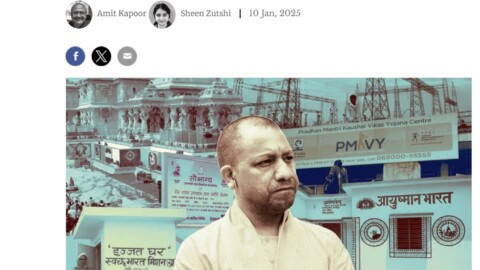Sustainability has imploded as an agenda with unprecedented scope and significance. India’s movement for a Lifestyle for Environment (LiFE) is now in the global spotlight as a premier initiative for nurturing a “pro planet people”. It is emerging as a consciously tailored policy for climate change focusing on reducing consumption at an individual level. Embers of LiFE already exist in the country, and there is much to learn from India’s environmental history. Understanding the pivotal role of indigenous knowledge systems in preserving ecology is essential for shaping the future of Indian sustainability. Hence, the call for LiFE is about taking a walk down the memory lane, drawing lessons for India’s future and implementing it on a larger scale. India has also revised its starting point from state action to individual action. Now the question is, what kind of individual action will create long-standing sustainability in the country? How can we chart a new course for Indian environmentalism through indigenous knowledge and experiences from the ground? The answer is simple; launching movements from the ground and mainstreaming indigenous practices but building momentum for the same is not an easy task.
Each country will play to its strengths to achieve ambitious targets, and India should also tap into its rich body of indigenous knowledge. There is no one ideal way to practice sustainability in the country. India has diverse physical and social divisions. The history, experience, and expectations of sustainability in Meghalaya will significantly differ from Kerala’s. The first step is toward building environmental literacy within communities. When we talk about changing individual behaviour and lifestyle for the environment, it must be noted that the individual and the collective are closely entwined for preserving the environment. Practicing sustainability is about being consciously aware of how one’s life affects the community and working towards overall well-being.
In every vertical of sustainability, be it food, clothing, housing, or resource conservation India already has a rich repository of practices evolved for a particular context. In 2021, the United Nations Food and Agriculture Organisation recognised eight sustainable food systems worldwide, out of which two are from Meghalaya and Uttarakhand in India. The Khasi tribes from Nongtraw village in Meghalaya received global attention for their diverse traditional food systems like Jhum supported by livestock farming and other practices that respect local agro-biodiversity. This enabled the village to produce and consume quality yield even with supply chain disruptions due to COVID-19. Similarly, the Bhotias and Anwals of Uttrakhand follow ancestral nomadism and agro-pastoralism, which helps them meet 60% of the community’s food consumption needs. This shows how traditional practices can build resilience in communities and aid climate adaptation efforts. We can also take the example of Indian architecture. The country is now rife with green building consultants, but historically, every part of the country had its locally suited green buildings. Dhajji Dewri in Himachal Pradesh, Jammu, and Kashmir are traditional structures built by partially cutting mountain slopes. It is best suited for the region’s climatic variations while causing minimal disturbance to the topography. Today it is impossible to travel to the mountains without considering the possibility of landslides and rocks hurling down due to reckless practices. This is only a sneak peek into India’s depths of sustainable knowledge.
Finally, the only way to build a long-standing climate policy is by tapping into the strength of the grassroots and understanding the extent to which environmental movements can empower individuals on the ground. Chipko movement received global attention and is a landmark in the Indian environmental movement, but the starting point was at the community level. A social and yet personal struggle of Chandi Prasad Bhatt to preserve the local forest resources, escaped, connected, and thrived under the umbrella of eco feminism and peasant’s movement in the country. If we look at the history of environmental movements in India, be it Narmada Bachao Andolan or the Niyamgiri movement, the first call for action always comes from the ground, from a personal anecdote, because fear is not thrilling when you’re the one who is afraid. Also, the unique potential for LiFE lies in the fact that all humans, all Indians, are embedded and nurtured on the same earth. Besides, with increasing mobility and interconnectedness, we know the extent to which a tropical cyclone in Odisha can affect neighbouring states and communities.
Lifestyle for Environment should therefore emanate from India’s pre-existing pockets of indigenous knowledge, and the rest of the country should embrace these learnings from the ground. India has the right policy ecosystem and governance support for reinventing its sustainability movement. All Indian states incentivise eco-friendly practices like organic farming, electric mobility, and renewable energy infrastructure. Adapting them to local contexts, linking sustainability with community practices and sharing best practices with the world is the way forward to build momentum for a Lifestyle for Environment.
The article was published with Economic Times on June 9, 2022.
























